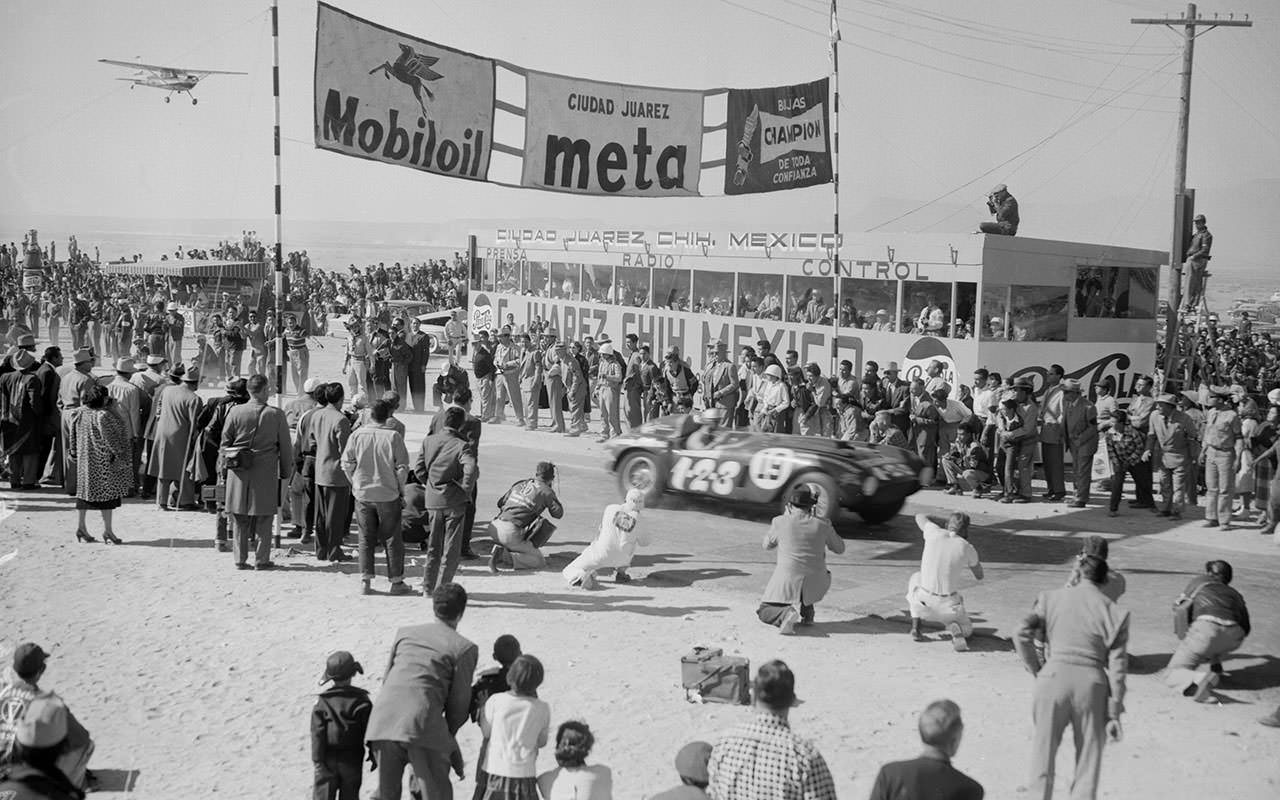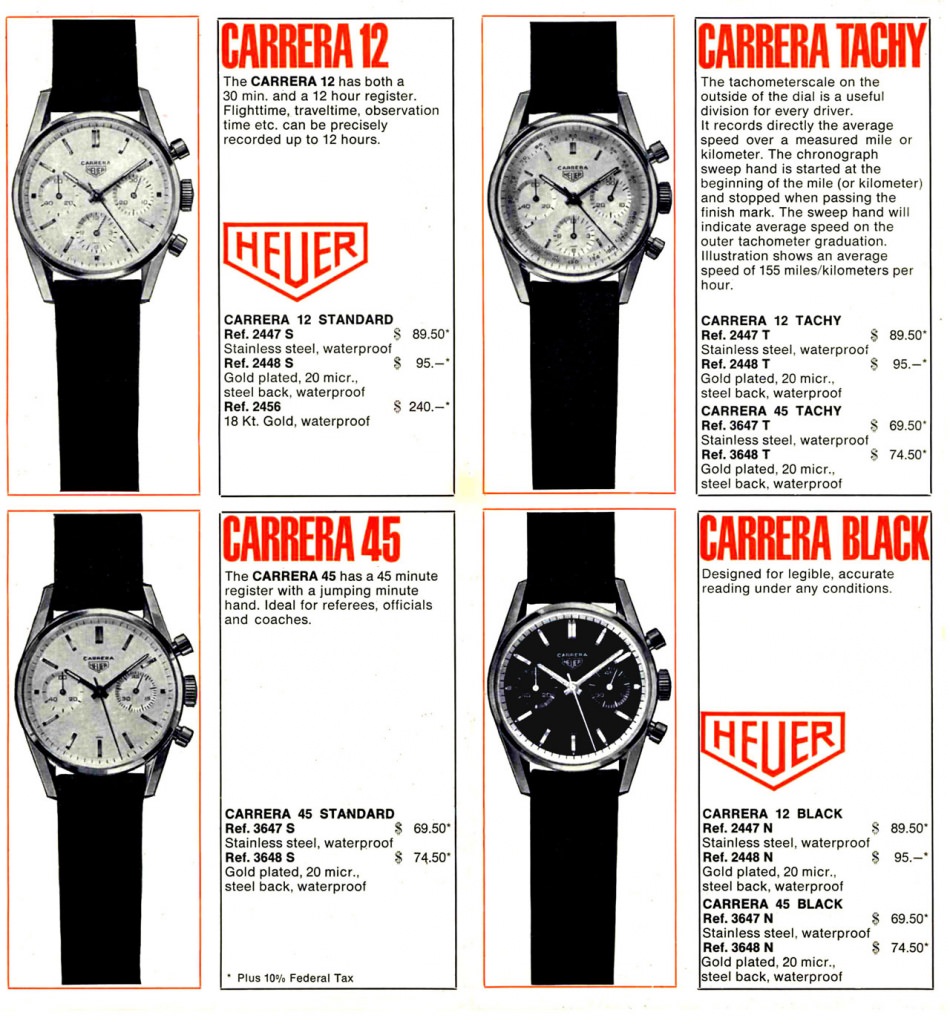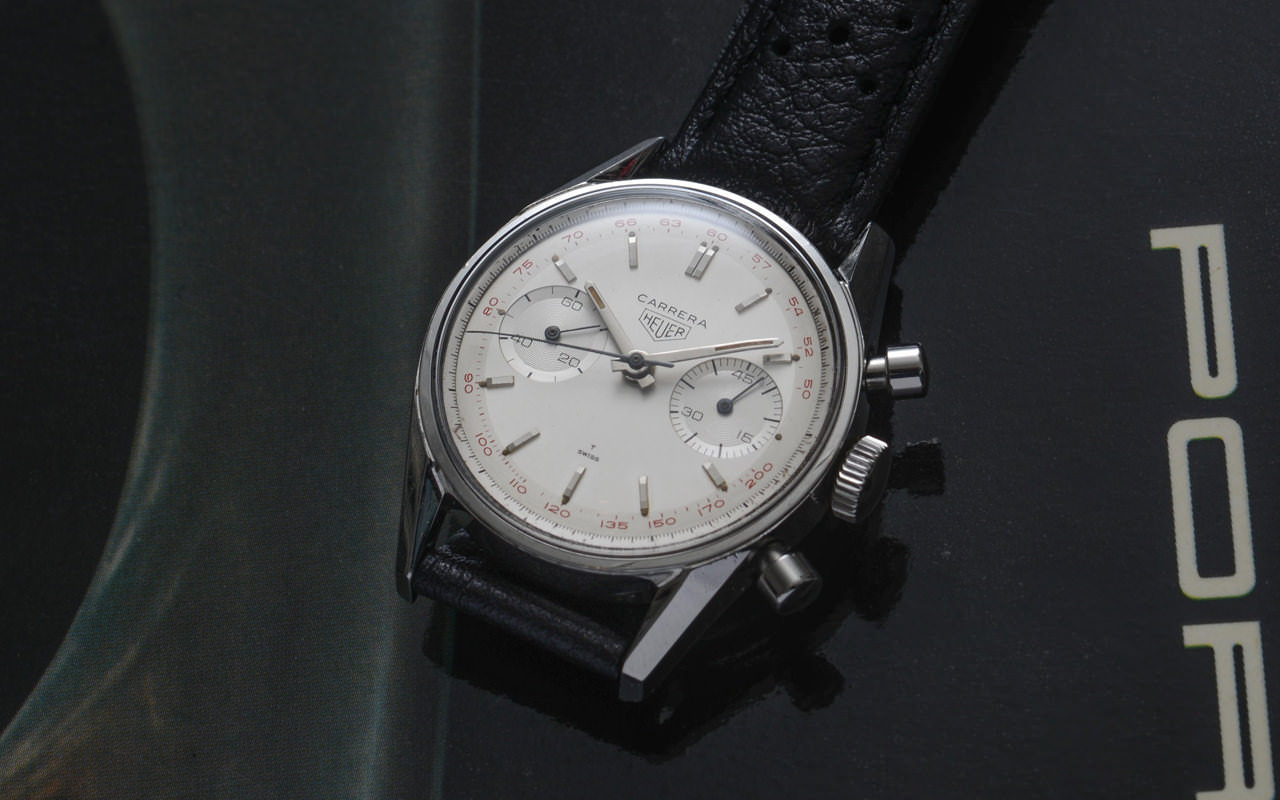The Heuer Carrera gets its name from the Carrera Panamericana, a border-to-border race across Mexico that claimed the lives of 27 racers, spectators, and crew members during the five years that it was held between 1950 and 1954. After first hearing about the deadly race in March 1962, while attending the 12 Hours of Sebring in Florida, the “Carrera” name stuck with Jack Heuer, as it means “race” or “career” in Spanish, and is relatively easy to pronounce in most languages.

Jack Heuer took his idea back to Switzerland and started to put together the watch that would become the Carrera: the reference 2447. Based around a manually-wound, Valjoux 72 movement, the watch used a case manufactured by Piquerez, a company that produced watch cases for a number of the industry’s leading timepiece manufacturers of the time. The case of the original Carrera does not have any form of crown guards, and features long and angular, diamond polished lugs. The overall shape of the case recalls designs from various 1940s Heuer chronographs while still showing a clear evolution of the brand and its design language.

The dial of the first Carrera was manufactured by Singer, who also produced dials for a number of other brands within the industry, such as Rolex, Omega, and Longines. Unlike the funky, art deco styling of Singer’s “Paul Newman” dials, the Carrera’s dial was simple, legible, and relatively monochromatic by comparison. Fitted with traditional baton-style hour markers, the dial of the original Carrera had absolutely no unnecessary features or additional colors whatsoever.
Rather than having a tachymeter (or other) scale printed on the dial – or positioned along the bezel like the Rolex Daytona and Omega Speedmaster – Jack Heuer simply chose to have the angled crystal tension ring, which was visible just below the inner rim of the crystal, painted with 1/5 second demarcations for the chronograph. In addition to permitting a simpler and cleaner overall design, this decision added additional dimensionality to the dial of the watch, which featured milled/recessed registers.
Unlike other Heuer timepieces that took some time to catch on and gather an audience, the Carrera was a hit upon its initial release. The public appreciated its clean and simple design, and shortly thereafter, Heuer started manufacturing other variants of the Carrera, such as those with date displays, and those with two-register layouts – there was even one that was specifically designed for yacht racing.
The Carrera continued to be a mainstay within the Heuer catalog for many years and in many different forms, until the TAG group purchased a majority stake of Heuer in 1985, and phased out the Carrera line during the late 1980s in favor of quartz-powered watches such as the Formula 1 and the Link. The Carrera’s absence was relatively short lived however, as TAG Heuer resurrected the Carrera during the mid 1990s, and since then, it has continued to be a successful collection for the brand.

Early Heuer Carreras from the 1960s are among the most sleek and functionally elegant chronographs ever produced. At their heart, these vintage Carreras are highly practical timekeepers with a long and storied history of being used at the racetrack to time automotive events. However, their clean dials and simple yet elegant overall design make them versatile and refined enough to be the one watch that you could wear with anything from a fireproof racing suit to a tailored three-piece suit.
Visit the shop to browse our collection of Heuer watches!

Check out 'Reference Tracks' our Spotify playlist. We’ll take you through what’s been spinning on the black circle at the C + T offices.

Never miss a watch. Get push notifications for new items and content as well as exclusive access to app only product launches.
Sign up for our newsletter to receive updates and exclusive offers